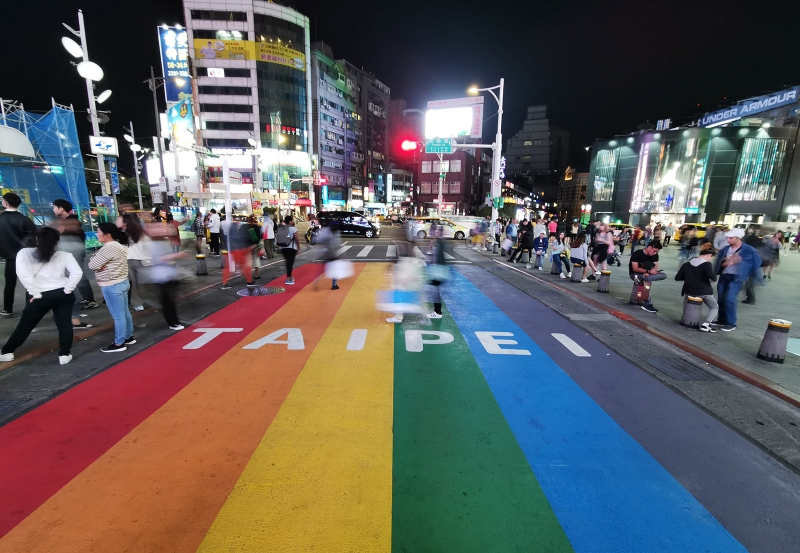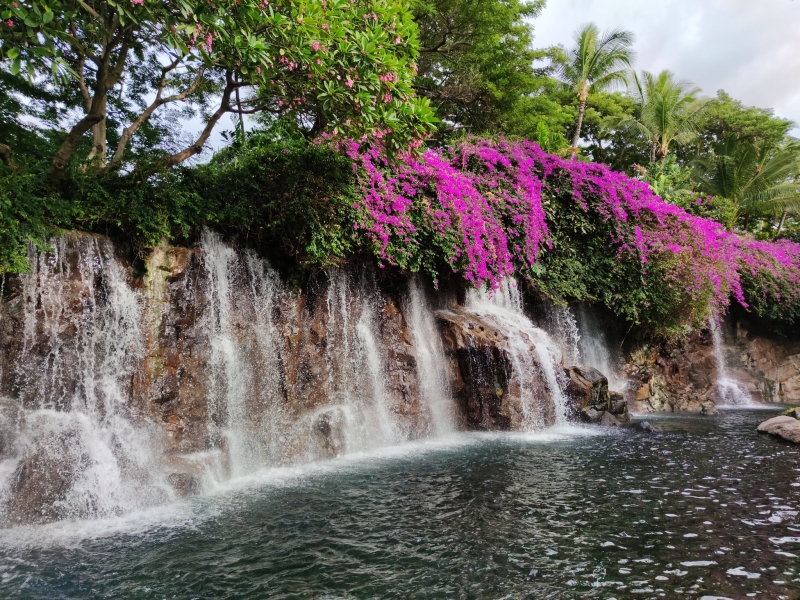What makes a good camera? For some, it’s simply the versatility to capture crisp, clear images in any lighting or scenario. Others look for depth of aperture to create stunning portraits and landscapes. For me, it’s all the above plus the added bonus of portability.
As most photography purists will agree, nothing compares to the satisfying aesthetic result of a photo taken with a DSLR, mirrorless or even film camera. However, it’s not always convenient to travel with a camera. They are often bulky, hard to carry around in crowded places, and can sometimes even attract unwanted attention. I know because I often travel with my DSLR too.
Last year, I got my hands on a pretty good camera phone (a Huawei) and I realised that, with a little patience and practise, it could do almost everything that my DSLR could in half the time. It was like a full-fledged camera neatly tucked into my pocket!
That was a year and a half ago, so needless to say, there are even better models on the market now. If you’re a travel photography enthusiast like me, then consider investing in these 10 camera phones that make taking stunning travel photos a real breeze!
1. Huawei P40 Pro

Sample portrait taken with Huawei P40 Pro | Image credit: Kārlis Dambrāns
Since Huawei famously flexed its collaboration with Leica (a German company specialising in cameras and lenses), it has established itself as the pioneering standard of camera phones. Some of their camera phones have been so good that they’ve blurred the lines between a camera phone and an actual camera. The P40 Pro is but another feather in the cap for Huawei.
Huawei’s new flagship boasts no less than four cameras, with the main camera being able to capture images at the size of 50 Megapixels (MP). In contrast, my old Nikon D3300 could only capture a maximum of 24MP! The rest of the cameras on the P40 Pro include a periscope camera with 5x optical zoom, an ultrawide lens (perfect for landscape photos), and a selfie camera that has 32MP.
Beyond technicalities, the P40 Pro also has a multitude of camera modes that help you achieve almost any effect that a normal camera can. From adjusting aperture and shutter speed to quickly selecting preset modules, taking professional grade travel photos will be (literally) as simple as pressing a button on your screen!
2. Samsung Galaxy S20 Ultra

Sample photo taken with Samsung Galaxy S20 Ultra | Image credit: Kārlis Dambrāns
The Samsung Galaxy S20 Ultra is arguably the best individual camera phone of 2020. It features a jaw-dropping 108MP main camera along with a 48MP telephoto camera, an ultrawide lens, and a front-facing camera that’s’ 40MP, which means your selfies will look as sharp and clear as ever!
The S20 Ultra’s most unique feature is its signature Single Take mode. With this, all you have to do is hold the camera shutter button, and every camera on the phone will start shooting photos and videos simultaneously. The AI will then pull out the best shots, picture, short video, GIF etc.!
Apart from that, the S20 Ultra features an impressive zoom function (5x optical zoom) which allows you to take crisp photos even at maximum zoom. It also has an accurate depth sensor at the back which helps you to blur out the background automatically and focus on the main subject. The only downside is the S20 Ultra’s price. However, all things considered, it’s highly unlikely that there’ll be a better camera phone than the S20 Ultra this year.
Also read: 13 Flower Fields in Southeast Asia for That Photoshoot You’ve Always Wanted
3. Huawei P30 Pro

Sample photo taken with Huawei P30 Pro
Although the year-old P30 Pro obviously isn’t as powerful as Huawei’s latest flagship models, it’s still a fairly decent camera phone. After all, when it first launched in early 2019, it was considered the best camera phone of its time. This was due to its excellent performance under low-light settings and for being one of the first mainstream brands to introduce the ultra-zoom function.
In terms of numbers, the P30 Pro has a 40MP main camera, an 8MP telephoto lens, an ultrawide lens and a 32MP front camera. It’s versatile set of cameras allows you to take a variety of different photos, some of which are on-par or even better than DSLR shots. I personally own one of these and I was blown away when I took it out for a spin during my trip to Taipei in late 2019.
I love long exposure shots but as most photographers will tell you, you’ll need a steady camera tripod if you want a perfect shot. The above photo (unedited) was taken using nothing but my hands and the results were incredible! So while the P30 Pro isn’t the newest camera phone on the market, it certainly still gives most new phones a run for their money, especially considering its now knockdown price!
4. Xiaomi Mi Note 10

Sample photo taken with Xiaomi Mi Note 10 | Image credit: Syefri Zulkefli
Before Samsung’s S20 Ultra blew everybody’s mind in 2020, the Xiaomi Mi Note 10 (released in December 2020) stunned everybody with its unprecedented 108MP main camera, which dwarfed almost every DSLR and mirrorless camera on the market at the time. Besides the record-breaking main camera, the Mi Note 10 featured an additional three cameras at the back which all worked together to create stunning, detailed images.
Unfortunately, while the main camera setup is certainly something to rave about, the rest of the cameras were inconsistent at best at times, especially in the absence of good lighting. That being said, given the sheer quality of the main camera, you’d probably still be able to do well in general.
5. OnePlus 8 Pro

Sample photo taken with OnePlus 8 Pro
Compared to all the other camera phones released around the same time, the OnePlus 8 Pro is pretty much the “best of the rest”. While it doesn’t boast the same high-end specs of the Huaweis and Samsungs, it certainly holds its own and is, frankly, a decent choice regardless.
It has a 48MP main camera with an extremely quick phase detection and autofocus and a telephoto lens that goes up to 3x optical zoom. It’s main feature however is the 48MP ultrawide lens, which beats even the Huawei P40 Pro.
With such a large pixel count, you’ll be able to fit in more of the photo with more resolution than any other camera phone on this setting. Essentially, it’s like a GoPro fitted into a phone! So if you’re big on landscape photography or panoramas, it’s certainly worth investing in the 8 Pro.
6. iPhone 11 Pro

Sample photo taken with iPhone 11 Pro | Image credit: VirtualWolf
On paper, the iPhone 11 Pro’s camera set up is nothing to get excited about. It features a humble 12MP setting for all its four cameras (including the front camera). Despite it being the best set of cameras ever on an iPhone, you might think that, based on pixels alone, surely the iPhone 11 Pro has lost. Not quite.
While it certainly lacks many of the key features the phones above on this list have, it’s still a pretty reliable camera phone. What makes it stand out is its ability to take picture perfect portraits (even in dim lighting) due to its 52mm focal length. It’s Night Mode feature is another subtle touch that makes it a phone worth looking at.
However, hand to heart, given the price of the iPhone 11 Pro, I would say that if you’re looking to take truly stunning photos, there are better options out there.
7. Google Pixel 4

Sample photo taken with Google Pixel 4
Like the iPhone 11 Pro, the Google Pixel 4 isn’t what you’d consider a game changer in smartphone photography. For one, it’s the only one on this list that doesn’t have an ultrawide camera function. It’s two back cameras share a similar pixel profile as the iPhone 11 Pro, with an even weaker front camera.
However, the Pixel 4 has something that truly justifies its place on this list: its unique Astrophotography mode. Basically, with this mode, you’re able to take long-exposure shots that are up to five minutes long! For those not in the know, long-exposure shots capture and blur movement while stationary objects remain sharp and clear. The longer you shoot, the more profound the results (such as silky smooth running water, light streaks in the city etc.).
With the Astrophotography mode, you’ll be able to capture photos of the night sky that even some top-of-the-line DSLRs can’t! Just imagine the surreal photos you could take on a clear night! So while the Pixel 4 isn’t the best camera phone by a long shot, it’s certainly worth investing in if you’re planning on going on a night hike and capturing some stunning pics of the Milky Way!
8. Samsung Galaxy Note 10 Plus

Sample photo taken with Galaxy Note 10 Plus | Image credit: Simon Foot
Wrapping up the list is the (at the time) revolutionary Samsung Note 10. Once again, the pixels here are not game-changing. Rather, it’s down to the Note 10’s unique dual-aperture main camera. With it, you can switch between high and low light settings in an instant, precisely like the human eye.
A comprehensive UI and the ability to use the S Pen to control the shutter also makes the Note 10 camera easy to use, allowing you to produce DSLR-grade photos with ease. While it’s certainly not one of the newest phones nor the best (for its price), it’s definitely not a bad choice if you’re looking for a good camera phone that compliments all your other needs.
Also read: Inside the Dreamy Camera Cafe in Korea
Snap away with your handy pocket camera!
As a good travel companion once told me in Madrid, the best camera is one that you can keep in your pocket. I’m not saying that the time of DSLRs and mirrorless cameras is over (there are still some things that only those cameras can do), but phone cameras have certainly come a long way. So, if you’re looking for a portable camera to accompany you as you travel, you definitely won’t go wrong with one of these awesome choices!





